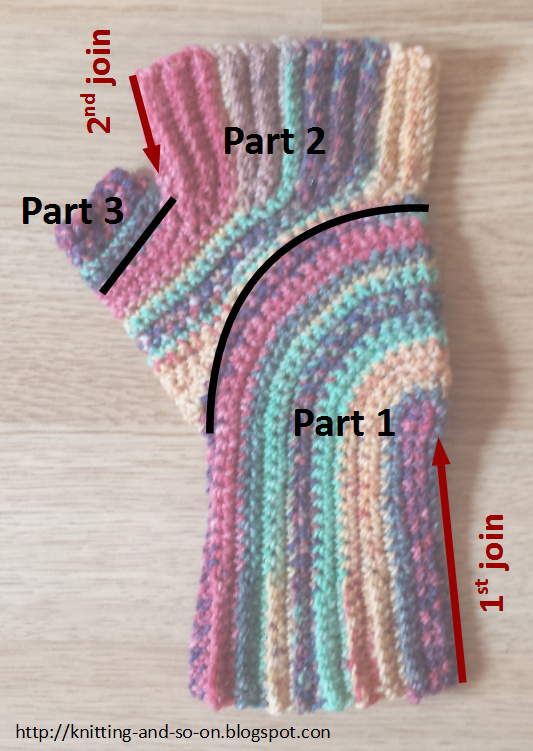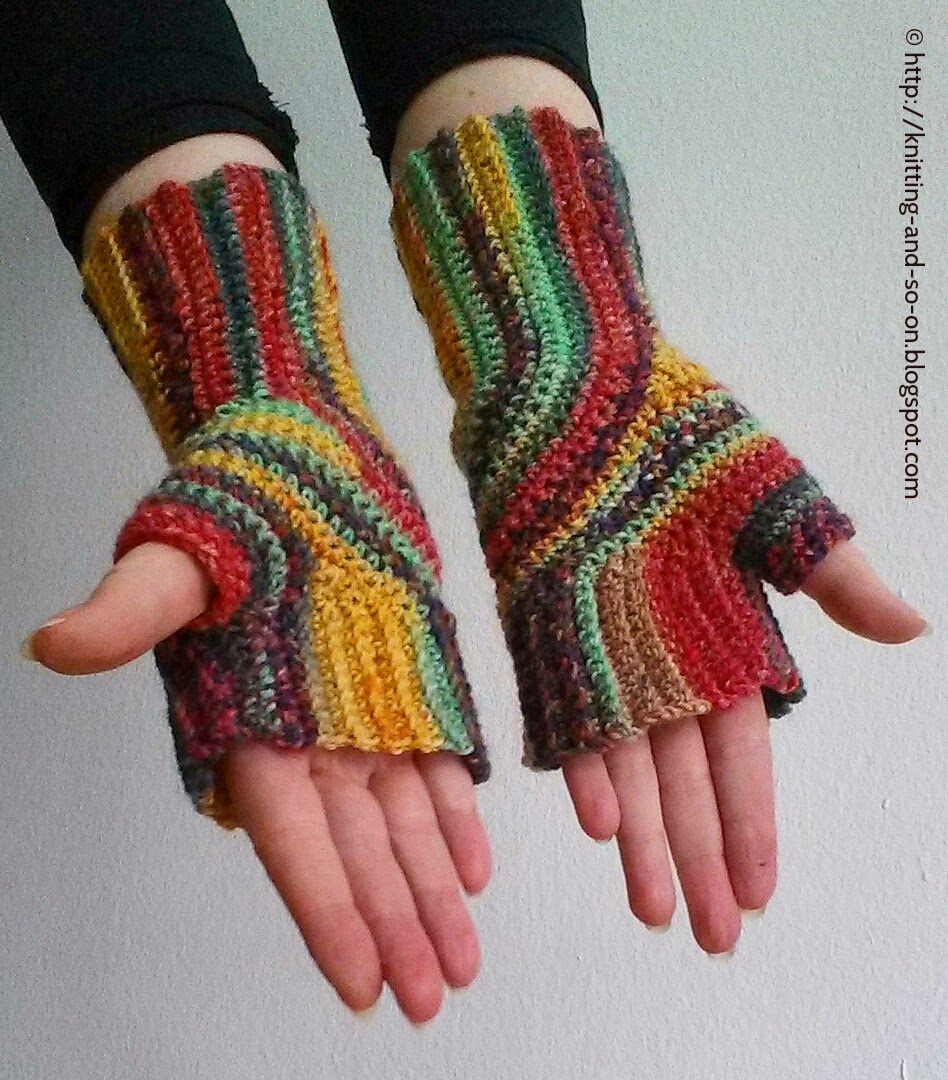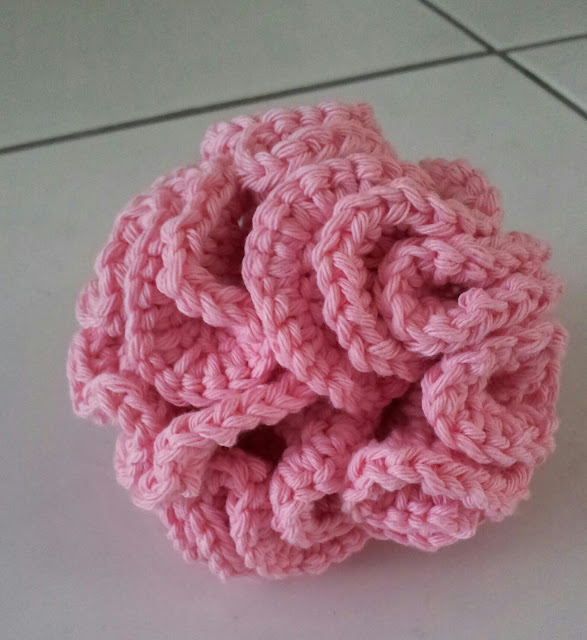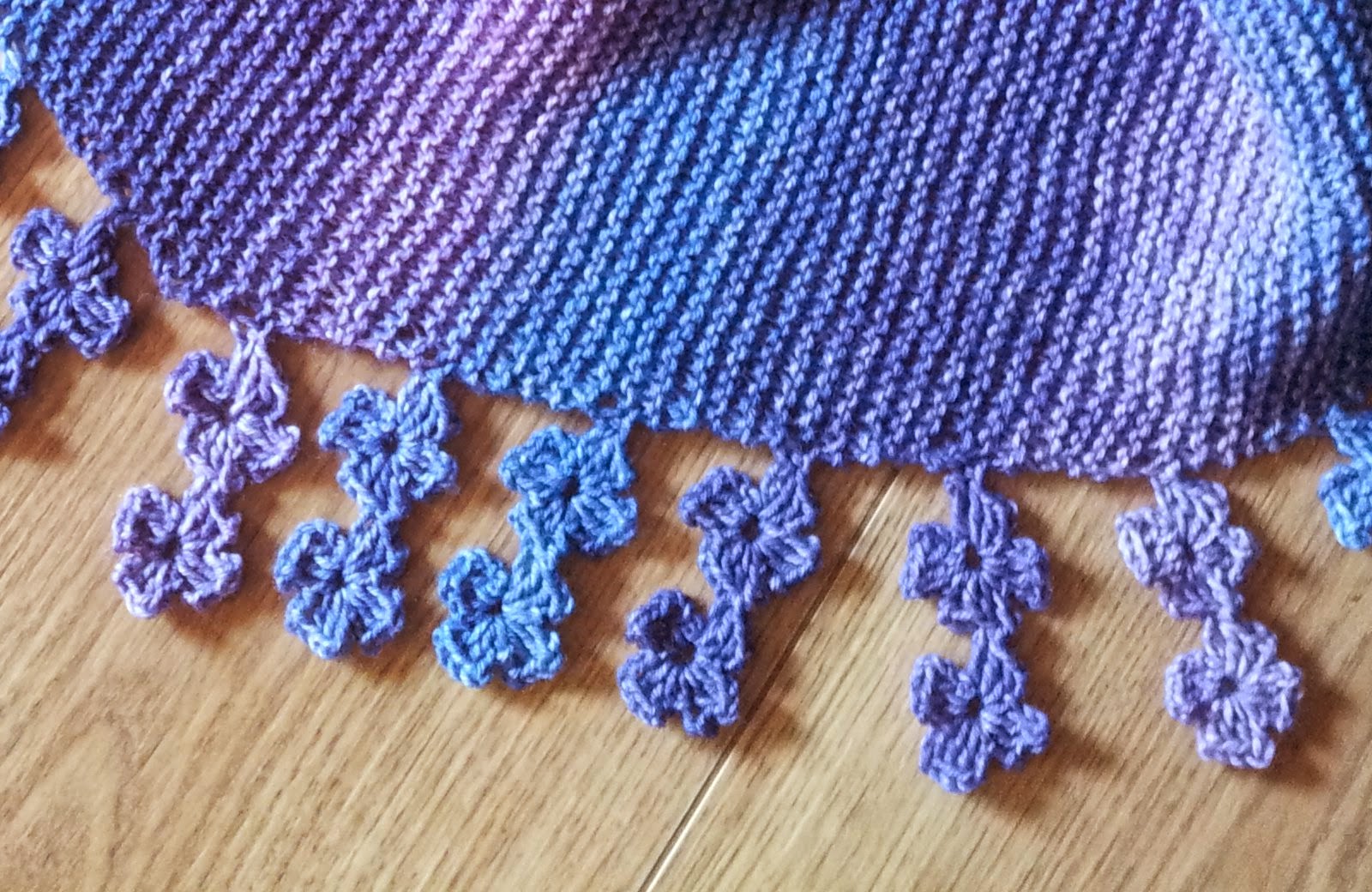Another summer started and I - finally - started to crochet a hat. As usual I was too lazy to search for a pattern that fits my size, to swatch and so on. I ended up trying and frogging twice before I got it right. But now, it fits perfectly.
I chose the name Nikko because these kinds of hats remind me of Japan in summer and "nikko" - besides being a town name - means sunlight or sunshine.


This work by Knitting and so on is licensed under a Creative Commons Attribution-NonCommercial-ShareAlike 4.0 International License.
Tweet
Materials
- yarn (I used about 200 metres of DK weight yarn - 2 skeins of Lang Xenia (a mix of cotton, linen and rayon)
- a crochet hook to match the yarn (I used 3.5mm hook)
- a tape measure
- a tapestry needle to weave in ends
Techniques and Abbreviations
- Magic ring: A method to avoid the little hole when starting to crochet in the round - the technique is shown in this YouTube video by planetjune.com
- ch: chain stitch
- ss: slip stitch
- sc: single crochet
- sc-inc: single crochet increase; two single crochets into one stitch below
- dc: double crochet
- dc-inc: double crochet increase: two double crochets into one stitch below
A way to crochet a flat circle is to start with a magic loop and 8 sc in the round. In each of the following rounds the stitch count will be increased by 8.
That means that in the 2nd round every 2nd stitch needs to be doubled (e.g. by crocheting 2 sc into the sc below). In the 3rd round every 3rd stitch needs to be doubled, in the 4th round every 4 stitch ... and so on. So when you distribute the increases evenly, in round 2 there is always one stitch between the increases, in the 3rd round there are 2 normal stitches between the increases, in round 4 there are 3 stitches between the increases ... and so one.
For a hat there needs to be a sort of incline, i.e. less than 8 stitches need to be doubled per round, so after the first few rounds there will be more stitches between the increases.
Preparations
Take the following measurements:
- A = the desired height of your hat (you can do that by measuring around the top of your head from about 1 cm into your ear to the same point at the other ear - and then taking half of that distance
- B = the circumference of your head
Instructions
There are two versions of the instructions one really short one that explains the
Really short version
- Crochet a magic ring with 8 sc and close with ss
- Crocheting a circle (as explained above) alternate in crocheting one round of sc and one round of dc - until your piece measures one fifth (1/5) of the desired height.
- Continue alternating sc and dc rounds, but with less increases - calculate the stitches between the increases by multiplying the normal stitch distance by 1.5 until your piece measures three fifth of the desired height.
- Continue alternating sc and dc rounds, but now with a distance between the increases as twice as wide as the distance for a normal circle until your piece has the desired circumference.
- Then continue to alternate sc and dc rounds without any increases until your head has the desired height.
- To crochet the brim, increase every third stitch - still continuing to change each round between a dc round and an sc round.
- Continue without any increases until the brim is as wide as you like it to be.
Longer Version with Examples and Comments
This example is one-size only - there are explanations to adjust it to your size, and some comments (written in purple) to explain the "thinking" behind this pattern.
Crochet a magic ring with 8 sc and close with a ss.
For the first fifth of the height the hat is worked as a circle,
R1: ch1, sc-inc to end of round, close with ss
R2: ch3, * dc, dc-inc repeat from * to end of round, close with ss
R3: ch1, * sc-in, 2sc repeat from * to end of round, close with ss
R4: ch3, * dc, dc-inc, dc repeat from * to end of round, close with ss
[To avoid visible corners the first increase stitch is at a random spot.]
After these four rounds, I had finished one fifth of the height. Adjust the number of rows to the size of your head and your crochet piece.
In order to shape the hat, less increases are worked from now on. For the 2nd and 3rd fifth, the distance between the increases is 1.5 times as high as for a flat circle.
R5: ch1, * sc3, sc-inc, sc3 * sc, sc-inc, sc repeat from * to end of round, close with ss
[5 x 1.5 = 7.5 (rounded to 7), i.e. every 7th stitch is doubled, i.e. there are 6 stiches between the increases]
[To avoid visible corners the first increase stitch is always at a random spot.]
From this point on there may be a few stitches left at the end of your round after you finish your last complete repeat. Just finish the round with sc's (or dc's in even-numbered rounds) and then close with ss
R6: ch3, * dc8, dc-inc repeat from * to end of round, close with ss
[6 * 1.5 = 9, i.e. every 9th stitch is double or 8 stitches between the increases]
R7: ch1, * sc1, sc-inc, sc8 repeat from * to end of round, close with ss
[7 x 1.5 = 10.5 (rounded to 10), i.e. every 10th stitch is doubled]
R8: ch3, * dc5, dc-inc, dc6 repeat from * to end of round, close with ss
[8 x 1.5 = 12, i.e. every 12th stitch is doubled or 11 stitches between the increases]
Continue in this fashion (increasing according to the formula and alternating sc- and dc-rounds) until you have reached 3/5 (three fifth) of the height of your hat. For me this was the case after the 12th round, i.e. I continued with round number 13. Please adjust this to your size.
From now on you have to measure the hat's desired circumference, once you've reached that, stop the increases and just go on with alternating sc- and dc-rounds until you've reached the desired height.
If you haven't reached the circumference, yet, continue increasing but with an even wider distance between the increases: twice as wide as for a flat circle.
R13: ch1, * sc10, sc-inc, sc15 repeat from * to end of round, close with ss
[13 x 2 = 26, every 26th stitch is doubled]
R14: ch3, * dc3, dc-inc, dc24 repeat from * to end of round, close with ss
[14 x 2 = 28, every 28th stitch is doubled]
Continue in this fashion (increasing according to the formula and alternating sc- and dc-rounds) until your hat has the desired circumference.
Then add alternating sc- and dc-rounds without any increases until your piece has the desired height.
For me this was the case after round 16. Please adjust to your size.
R17: ch1, sc until end or round, close with ss
R18: ch3, dc until end or round, close with ss
When your hat has the desired height, start crocheting the brim. For me this was the case after the 24th round.
To start the brim, crochet a round where every 2nd stitch is doubled.
If this is an odd-number round (i.e. an sc-round): ch1 * sc-inc, sc2 repeat from * to end of round, close with ss
If this is an even-number round (i.e. a dc-round): ch1 * dc-inc, dc2 repeat from * to end of round, close with ss
Continue alternating sc- and dc-rounds (without increases) until you're brim is as wide as you like it to be. I stopped after the 4th brim-round because I ran out of yarn.
Weave in ends and you're done!







































